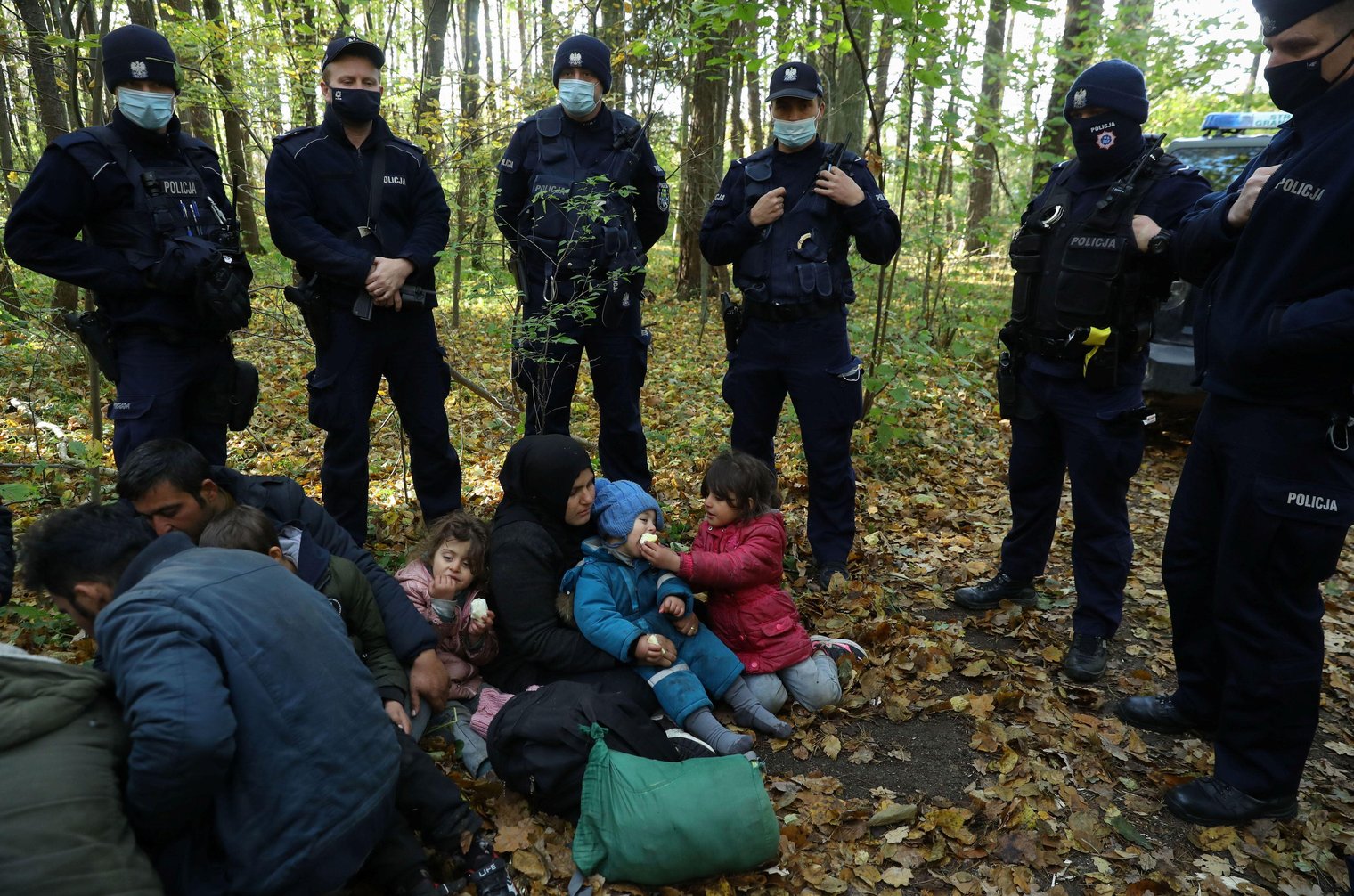For over a year now, there has been a humanitarian crisis along borders between the European Union and Belarus. Poland is refusing to give refuge to asylum seekers who enter it from Belarus, and the European Union is supporting it.
It was a different story during an earlier crisis, in 2015. Then, the EU condemned Poland for failing to fulfil its obligations under EU law by refusing to give refuge to asylum seekers. Now the EU consensus is that Belarus is orchestrating a migration crisis with the intention of destabilising the union, and the European Commission seems to believe that Belarus’ actions justify a harsh response to migrants.
The situation has been particularly dire along the Polish-Belarusian border. There, people attempting to cross from Belarus by unofficial routes choose to hide from Polish border guards for weeks in the wilderness of eastern Poland to avoid the risk of a violent forced return to Belarus.
A group of Syrians who I met near the town of Siemiatycze in November 2021 told me that they had been pushed back at least a dozen times over several weeks. This is just one of hundreds, possibly even thousands, of such cases.
To contain such ‘irregular’ crossings from Belarus, its EU neighbours Poland, Lithuania and Latvia have sealed their borders and effectively suspended their established asylum systems. Poland has adopted legal tools that are grossly incompatible with its international and EU obligations, let alone its own constitutional framework.

Comments
We encourage anyone to comment, please consult the oD commenting guidelines if you have any questions.